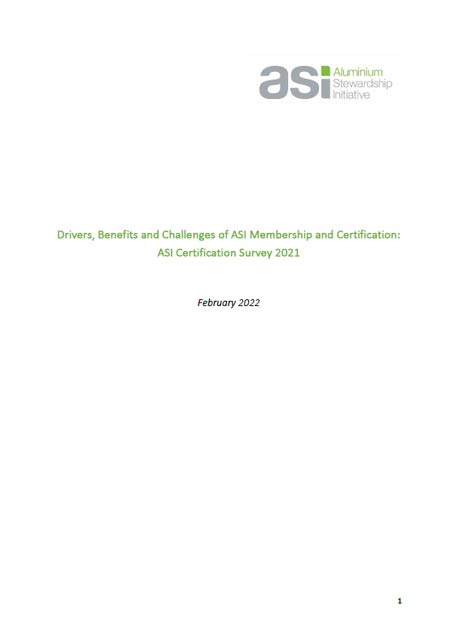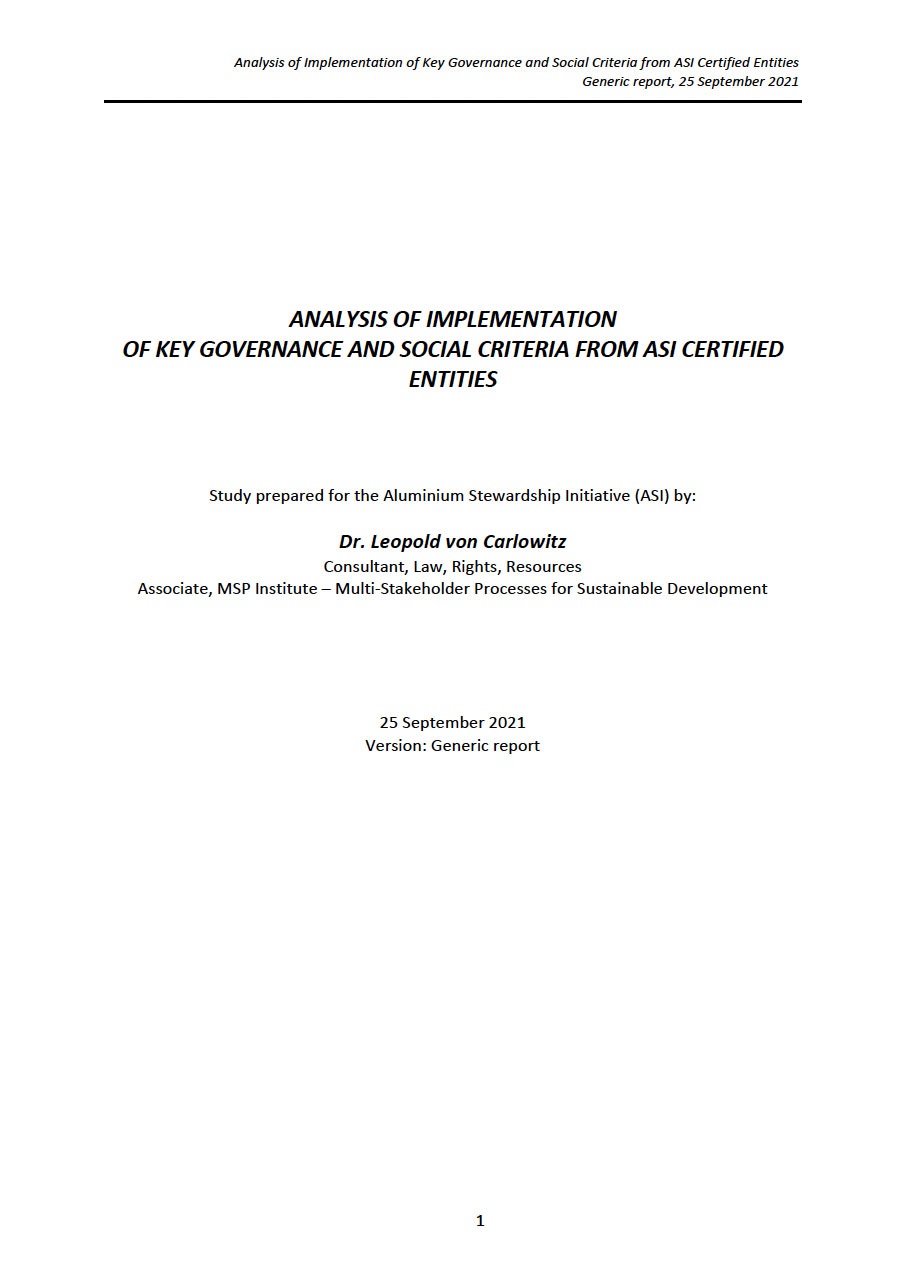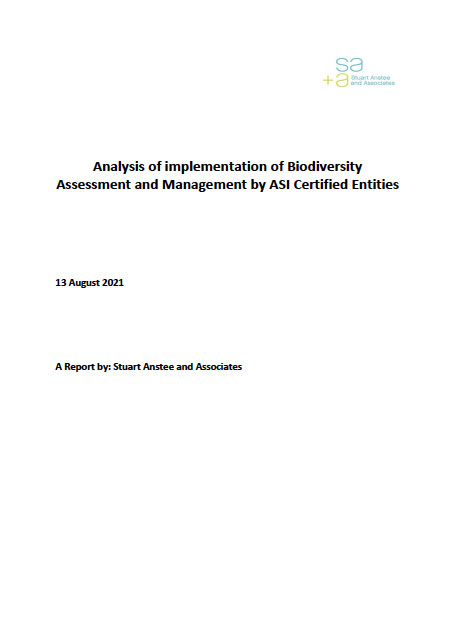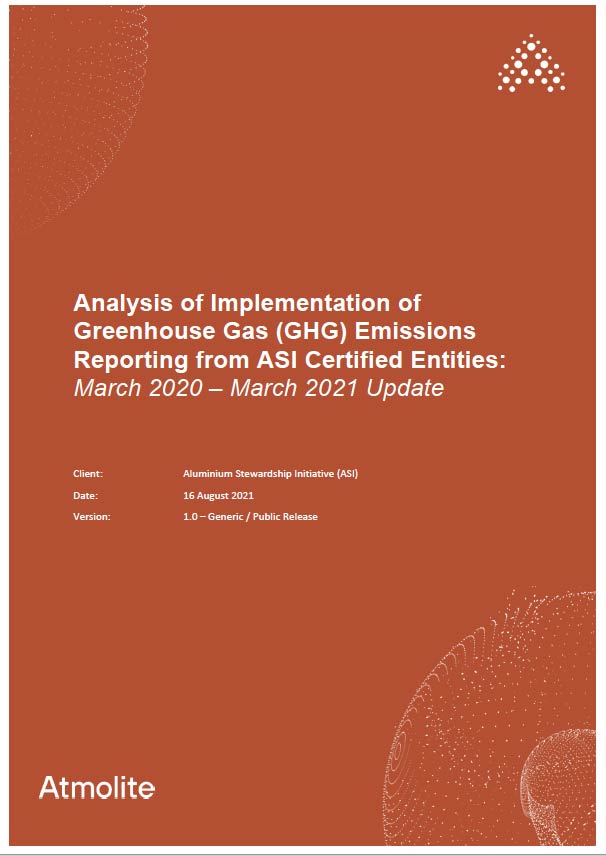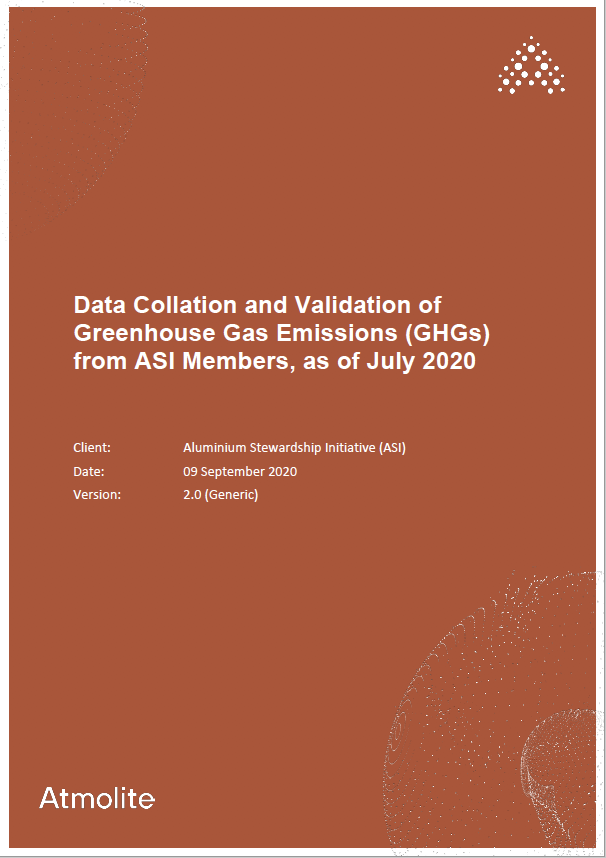This report summaries a review of published Greenhouse Gas (GHG) Emissions and energy use data from certified ASI Entities, and was conducted by Atmolite Consulting Pty Ltd. Where possible, totals and intensities (per unit product) were obtained for energy use and GHG emissions (Scope 1, 2 and where available Scope 3). The review covered 51 ASI Entities, from 34 ASI members. Of these, 15 Entities were engaged in aluminium smelting.
The findings here represent a snapshot of GHG data disclosures as of July 2020, with granularity at the regional, country and supply chain activity level. The data collected was from the most recent year for each Entity (2018 or 2019), and where available, up to 5 years’ historical data to examine trends over time.
Note that this report uses generic labels (region and numeral) to refer to specific ASI Entities; for example, ‘SA-1’ refers to Entity #1 in South America.
Data challenges
All data acquired for this exercise were collected from publicly available sources. However, complete data sets – for both emissions and energy use – were not found for a large number of ASI Entities, despite reasonable efforts to source these. Challenges in obtaining data are described in the report, with a ‘data quality rating’ provided for each Entity. For example, no data were found for five out of 51 Entities, and data disclosure was rated ‘poor’ for 12 Entities. In light of these data challenges, it is recommended that ASI and its GHG Working Group consider the creation and adoption of standard data templates, or consistent reporting requirements, for Entities disclosing emissions and energy use.
Given the gaps in data completeness, absent emissions and/or energy values were calculated using other published data – for example, conversions of totals to intensities if production figures are known. This allowed for more meaningful comparisons across ASI’s membership. Furthermore, where data specific to an ASI Entity was not available, data from their parent / corporate Entities (if applicable) was used to ‘fill the gaps’. Data issues for specific Entities are described in the report’s appendices.
Many ASI Entities report aggregated data across multiple supply chain activities, rather than individually. To facilitate comparison by activities, the aluminium supply chain was redefined into five categories: Bauxite, Alumina, Smelting, ‘Remelt-to-Downstream’ and Downstream. The resulting energy and emissions profiles (using intensity units, GJ and t CO2e per t product) across the ASI membership were then examined by supply chain, region and country.
Trends in energy intensity
As expected, the Smelting supply chain activity exhibits the highest energy intensity, with a median of ~60 GJ/t product, compared to 5-7 GJ/t product for the Remelt and Downstream activities. Comparison with Bauxite and Alumina activities was not possible, given the lack of data. In Smelting, variability in energy intensity is noted in the Gulf Cooperation Council (GCC) region (different accounting basis) whilst Entities in West Europe exhibit the lowest energy intensity. Data Collation & Validation of GHGs from ASI Members, as of July 2020 iv Trends in GHG emissions intensity (Scope 1+2) Consistent with the energy profile, Smelting is responsible for the highest emissions across the supply chain activities within ASI’s membership, with a median and average of 3.1 and 5.7 t CO2e/t Al, respectively. Smelting also has the most significant variation compared to other supply chain activities, ranging from 1.6 to 17.8 t CO2e/t Al. This is driven by the range of electricity sources – from renewable hydro to carbon-intensive coal. Nine of 11 reporting Smelting Entities meet the current ASI Performance Standard target of 8 t CO2e/t Al. Seven Entities (mainly hydro powered) are at 4 t CO2e/t Al or less, situated in West Europe, East/Central Europe, North America South America, or Oceania. GCC smelting Entities (mainly natural gas powered) are at or just above the 8 t CO2e/t Al level. Despite representing >50% of global smelting capacity, China was only represented by a single ASI Entity with the 17.8 t CO2e/t Al data point, due to coal being the energy source. Significant changes in the energy mix are needed if smelters in this region are to meet the 8 t CO2e/t Al target over the next ten years. Some potential trends in China are discussed in this report.
ASI’s Bauxite and Alumina supply chain activities exhibit lower GHG emissions, at below 0.1 t CO2e/t bauxite and with a median of 0.7 t CO2e/t alumina, respectively. The median value for Alumina is perhaps lower than might be expected from the International Aluminium Institute’s (IAI) modelling of the emissions from the global alumina supply chain activity. The Remelt-to-Downstream and Downstream activities – representing over 50% of ASI Entities – reported median intensities of 0.8 and 0.5 t CO2e/t Al, respectively.
In terms of trends in emissions or energy use over time, most Entities are reasonably stable or reducing, with some exceptions due to production increases or changes in investments/divestments.
Impact of ASI membership
An observed positive impact of ASI’s membership has been the adoption of emissions, energy and general sustainability disclosures for companies and regions (particularly developing nations) that did not previously exhibit this practice.
Given the global Smelting activity’s significant contribution to GHG emissions, it may be advantageous for ASI to provide alternative pathways for engagement and membership (if not certification) for smelting Entities that currently source their energy from coal (or other carbon-intensive sources). This could focus on Entities that cannot practically meet the 8 t CO2e/t Al emissions target but can still demonstrate material reductions over time.

